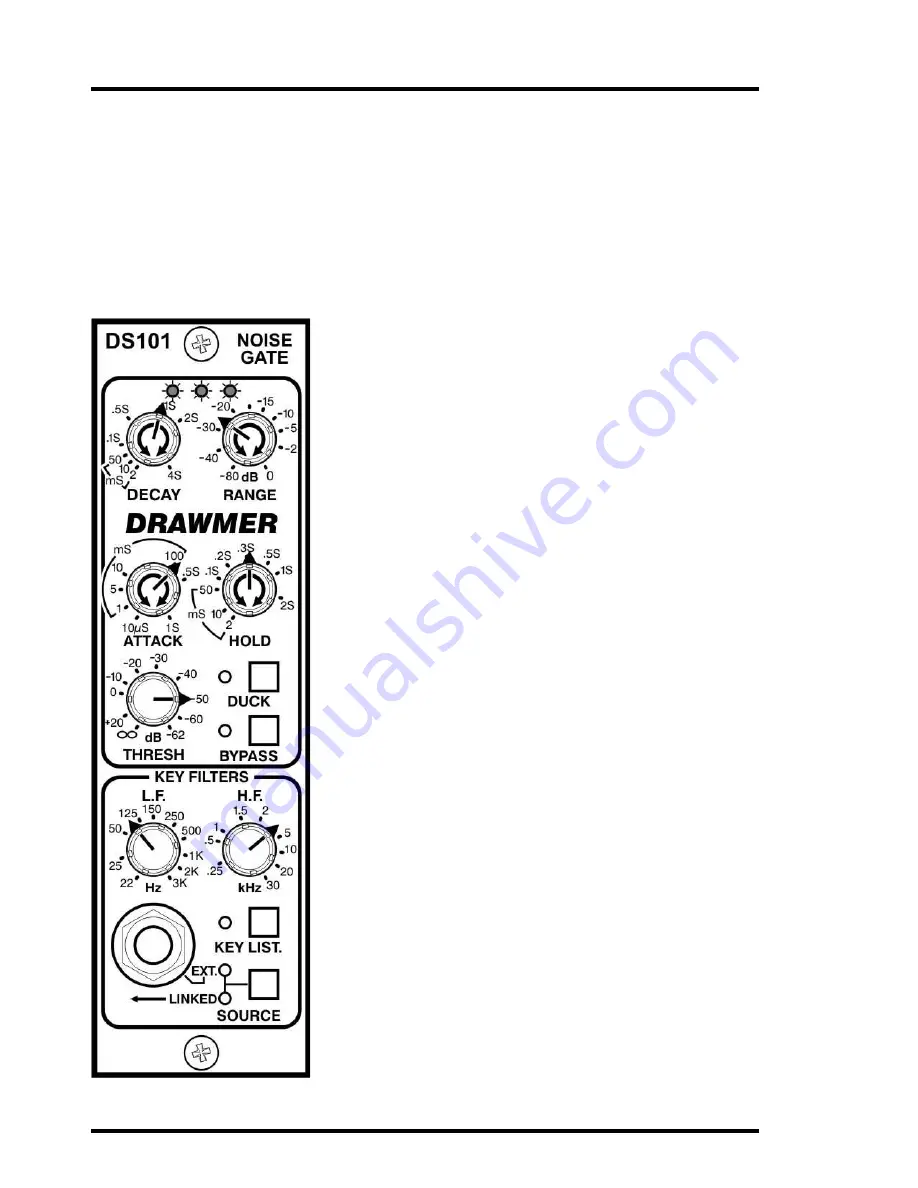
1 2
DRAWMER
Difficult Material To Gate
If noise contamination is serious enough to be evident even during moderately
loud programme material, then simple gating will do little to help. Indeed, the very
fact that the Gate produces silence during pauses can make the noise content of
the programme material even more apparent. In extreme cases restricting the
Range of the Gate to about -15dB will adequately reduce the noise during pauses
but not too dramatically.
Where the wanted signal does not occupy the full
audio spectrum the Key filters may also be used to
good effect. Taking the example of the electric guitar,
this produces little below 100Hz or above 3kHz so
setting the Gate to Key Listen mode will enable you
to use the filters to exclude much of the amplifier
hum at the low end and hiss at the top end while
having little effect on the sound of the guitar.
Surprisingly, the same is true of the acoustic guitar;
(even a bright-sounding steel-strung model), and
the filters can be used to reduce the effect of string
squeak or the player’s breathing.
When recording drum kits most engineers encounter
severe problems in achieving good separation
between bass, snare, toms and hi-hat etc. Each
tends to bleed through onto virtually every other
microphone. It is here where the key filters of the
gate come into their own:
Suppose that you're gating a snare drum but the hi-
hat is bleeding through into the snare mic at quite a
high level and opening the gate. Without the Filters,
you can't find a Threshold level where the snare
drum opens the gate and the hi-hat doesn't.
Fortunately, the frequency characteristics of the two
sounds differ quite widely; the snare drum covers a
pretty wide frequency range, while the acoustic
energy of the hi-hat is at frequencies above 5kHz. If
you can prevent the high frequencies from getting
through, only the lower frequencies of the snare will
open the gate. In this case, whilst listening using
the Key Listen mode, all you need do is turn down
Remove Humm from a
Guitar



































